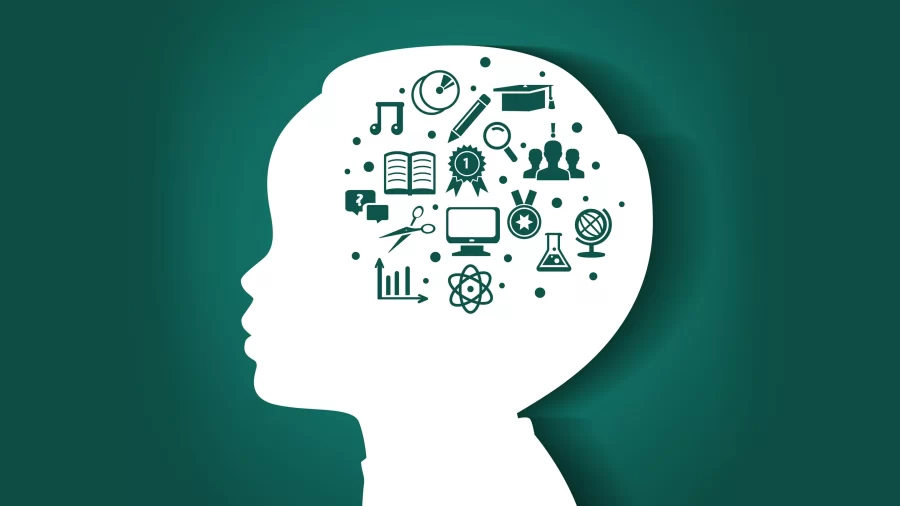Should Breaks be Required During Classes?
With the height of the pandemic nearly two years behind us, it feels as if our lives have returned to some semblance of what they were. Especially in school, policies that were put in place in 2020 to prevent the spread of COVID-19 have mostly disappeared, with COVID posing far less of a threat to communities than it once did. However, one policy that has remained at LOLHS following the start of the pandemic is the block schedule, where there are four class periods per day, each consisting of about 85 minutes. Most students like this type of schedule, but it has led to some difficulties following the lifting of the mask mandate in school. When masks were required, each class implemented a small mask break, which split up the 85 minute period. However, now that the majority of students choose not to wear masks, breaks are no longer required, and it is common for students to sit through the full 85 minutes. Despite this, required breaks may be beneficial, given adolescent’s already short attention spans, paired with the effects of social media and inconsistent sleep schedules.
Although it is not the sole cause, social media has contributed to a decrease in the length of attention spans. According to the Cross River Therapy Foundation, the average attention span of a teenager lasts just 32-48 minutes, and many experts say that attention spans are continually shrinking. In fact, the average human attention span decreased around 25% between 2010-2015. Why? Studies suggest that this is due in part to social media use. In a Guardian article, Philipp Lorenz-Spreen of the Max Planck Institute for Human Development wrote that because of social media “Content is increasing in volume, which exhausts our attention and our urge for ‘newness’ causes us to collectively switch between topics more regularly,” (McClinton). Spreen does clarify that this decline began occurring “at least a hundred years ago,” (McClinton), and that greater overall consumption of information is largely the issue, making social media a modern catalyst of this trend. No matter the cause, the data is undeniable that attention spans are steadily decreasing. Even without a decline, the average teenage attention span alone is a little less than half the length of a class period at LOLHS, making it hard for students to retain information as the class progresses.
Sleep also plays an important role in the learning of students. For example, according to the Division of Sleep Medicine at Harvard Medical School, “When we are sleep deprived, our focus, attention, and vigilance drift, making it more difficult to receive information.” (Harvard Medical School). It is recommended that teenagers get 8-10 hours of sleep per night. However, in a study done by the CDC, 72.7% of high school students did not get enough sleep on school nights. Furthermore, teens are more likely to go to sleep later, so early school days can decrease the amount of sleep a student gets. In an article with CNN, Dr. Jess Shatkin, a psychiatrist at the Child Study Center at NYU Langone Medical Center, writes that “Adolescents start to release melatonin later in the day than adults. They release around 10 o’clock at night, naturally, which means they then get sleepy later, and because they go to bed later, they wake up later,” (Howard). It is because of this, Shatkin says, that ideally, school for teenagers should not start before 9 or even 10 a.m. Otherwise, sleep deprivation can occur, creating difficulties in focusing and learning in class.
With so many obstacles to focusing in school, experts say that one of the best ways to combat distractions in classrooms is by giving students breaks ranging from 5-60 minutes. Researchers at the health department of Cornell University say that taking purposeful breaks when learning “increases your energy, productivity, and ability to focus.” (Cornell Health). It would be difficult to alter the time schools begin, and social media has no intention of disappearing anytime soon. Frankly, administrators have very little control over those things. However, if breaks were required halfway through classes, perhaps students would be more productive and attentive in the classroom. By simply taking a motivated five minute break, the entire tone of a lesson could change, and re-energize the classroom for the remainder of the class.
Works Cited
“Brain breaks for cognitive wellbeing.” NSW Government Education, NSW Government, 4 Aug. 2020, education.nsw.gov.au/student-wellbeing/whole-school-approach/wellbeing-framework-for-schools/cognitive-wellbeing-strategies/brain-breaks-for-cognitive-wellbeing. Accessed 9 Dec. 2022.
Howard, Jacqueline. “What’s the best work schedule for your age?” CNN, 8 Sept. 2016. CNN, www.cnn.com/2016/09/08/health/best-work-schedule-sleep-schedule-age/index.html. Accessed 9 Dec. 2022.
McClinton, Dream. “Global attention span is narrowing and trends don’t last as long, study reveals.” The Guardian, 17 Apr. 2019. The Guardian, www.theguardian.com/society/2019/apr/16/got-a-minute-global-attention-span-is-narrowing-study-reveals. Accessed 9 Dec. 2022.
“Sleep in Middle and High School Students.” Centers for Disease Control and Prevention, U.S. Department of Health & Human Services, 10 Sept. 2020, www.cdc.gov/healthyschools/features/students-sleep.htm. Accessed 9 Dec. 2022.
“Sleep, Learning, and Memory.” Healthy Sleep, Division of Sleep Medicine at Harvard Medical School, 18 Dec. 2007, healthysleep.med.harvard.edu/healthy/matters/benefits-of-sleep/learning-memory. Accessed 9 Dec. 2022.
“Study Breaks & Stress-Busters.” Cornell Health, health.cornell.edu/about/news/study-breaks-stress-busters#:~:text=Research%20shows%20that%20taking%20purposeful,%E2%80%9D%20(see%20the%20research). Accessed 9 Dec. 2022.
Zauderer, Steven. “Average Human Attention Span By Age (Infographic).” Cross River Therapy, 15 Nov. 2022, www.crossrivertherapy.com/average-human-attention-span. Accessed 9 Dec. 2022.






